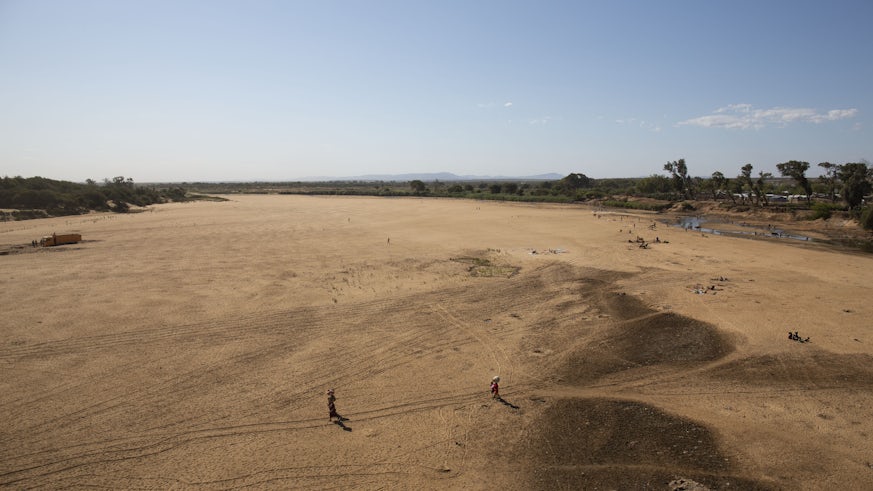Drought across Africa
3 November 2022

Vast swathes of Africa have experienced more frequent and intense episodes of drought since 1983, new research has uncovered.
Research commissioned by WaterAid saw Cardiff University expert Professor Michael Singer join forces with colleagues from the University of Bristol to shine a new light on trends in East Africa, Southern Africa and Central Africa.
Using data on population exposure in combination with the drought trends, the team found that the five worst-hit drought countries are Somalia, Sudan, South Africa, South Sudan and Namibia.
Their analysis shows there has been an increase in the annual number of dry and severely dry months in these African regions, as well as an increase in the percentage of their landmass experiencing drought between 1983-2021.
Some African countries – including South Africa, Namibia and Democratic Republic of Congo (DRC) – saw an increase of up to 40 percent of their landmass impacted by drought in the decade to 2021, compared to three decades ago.
Currently the Horn of Africa, which includes Somalia, Ethiopia and Kenya, is in its fifth consecutive failed rainy season since the end of 2020, which has plunged millions of people into severe food insecurity. A famine is now projected for the region, especially in Somalia.
Surprisingly, the research also shows that some countries are exhibiting contrasting trends – with one half of the country trending towards drought with acute water shortages, and the other half getting wetter with more frequent flooding.
This is occurring particularly in Kenya, Ethiopia, Nigeria, and Angola.
Countries in the western Sahel such as Senegal, Burkina Faso and parts of Mali and Niger, got wetter over the period 1983-2021, according to the research.
Lead researcher, Professor Michael Singer from Cardiff University’s School of Earth and Environmental Sciences and Deputy Director of the University’s Water Research Institute said:“This situation of simultaneous flooding and drought in different parts of the same country, as is currently occurring in East Africa, creates immense challenges for both disaster response management and for long-term adaptation to these climate-related hazards.”
In response to the findings, WaterAid has issued a stark warning: although these humid countries receive high amounts of rainfall each year, their populations may feel greater impacts of drought over the next decade if the current trajectory of drying continues.
The charity’s warning comes just days before world leaders meet at the UN Climate Change Conference, COP27, which will take place from 6 to 18 November in Sharm el-Sheikh, Egypt, to deliver action on issues critical to addressing the climate emergency and its impacts.
Tim Wainwright, Chief Executive of WaterAid who commissioned the report said:“Our new research is a warning bell that the dryland regions of Africa are heading into worse droughts and even lush, tropical countries, may soon be feeling the effects of drought.
“People are already dying on the frontline of the climate crisis due to a lack of food and clean water – the world can and must turn that deadly tide.
“World leaders meeting in Egypt should feel the weight of this responsibility on their shoulders.”
Share this story
The School is committed to achieving the highest standards in research and education and to providing a rich and varied research-led environment.



